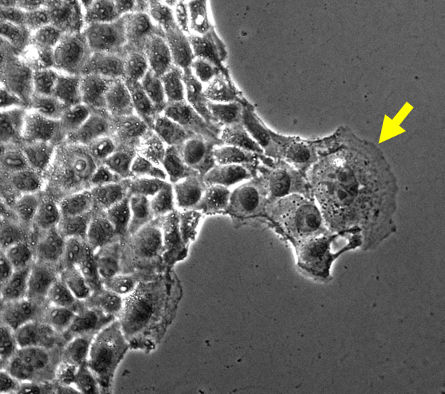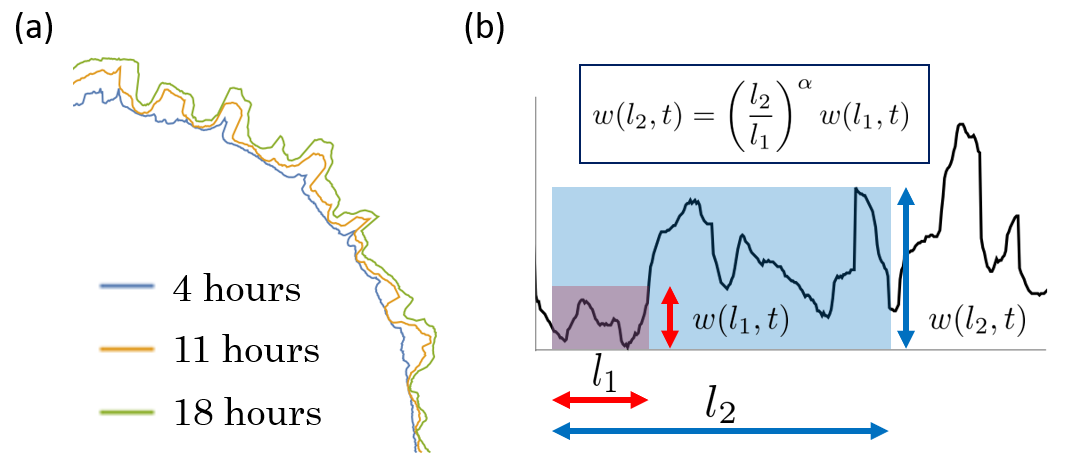研究成果 Research Results
- TOP
- News
- Research Results
- Viewing cell colony expansion through statistical physics
Viewing cell colony expansion through statistical physics
Study gives new insight into how cell colonies spread 2020.12.14Research ResultsLife & HealthPhysics & Chemistry
In statistical physics, seemingly disparate phenomena such as the growth of bacterial colonies and the propagation of a flame on paper have been connected through the “dynamic scaling law.”
While various phenomena in which the boundary surfaces take on a non-uniform shape while expanding have been found to obey this law, the mechanisms bringing forth this behavior have rarely been clarified.
Based on experimental observations and modeling, researchers from Kyushu University have now shown that the dynamic scaling law in epithelial cell colony expansion is formed by a tug-of-war between adhesion of cells and differences in cell motility.

Microscopic image of a leader cell. It has high motility and moves in a traction with the surrounding cells.
By constructing a mathematical model that describes the experimentally observed cell dynamics, the research team of PhD student Toshiki Oguma, Assistant Professor Hisako Takigawa-Imamura, and Professor Takeshi Miura found that random cell migration, emergence of highly motile “leader cells,” and the effects of cell-to-cell adhesion are sufficient for generating the dynamic scaling law.
Furthermore, they were able to analyze the model to derive an equation that links the scaling law and specific cell properties.
“These results show that concepts to understand the macroscopic deterministic phenomena from the microscopic stochastic behavior in statistical physics can be effectively applied to the life sciences,” comments Oguma, who is studying in the Graduate School of Medical Sciences.
The researchers expect that these results will also be useful beyond just the life sciences for explaining other various dynamic scaling phenomena.

(a) Expansion of epithelial cell colonies. The contour of colony gets rougher with time. (b) Spatial scaling law at the contour. The length l and the roughness of the interface w(l,t) of compared areas satisfy a power law.
###
For more information about this research, see “Mechanism underlying the dynamic scaling law in the contour of the epithelial monolayer,” Toshiki Oguma, Hisako Takigawa-Imamura, and Takashi Miura, Physical Review E (2020). https://doi.org/10.1103/PhysRevE.102.062408
This release is also available in Japanese.
Research-related inquiries
Takashi Miura, Professor
Faculty of Medical Sciences
Contact information can also be found in the full release.
- TOP
- News
- Research Results
- Viewing cell colony expansion through statistical physics































